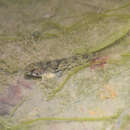Life Cycle
provided by Fishbase
The male guards the clutch only as long as the young have not hatched.
Migration
provided by Fishbase
Amphidromous. Refers to fishes that regularly migrate between freshwater and the sea (in both directions), but not for the purpose of breeding, as in anadromous and catadromous species. Sub-division of diadromous. Migrations should be cyclical and predictable and cover more than 100 km.Characteristic elements in amphidromy are: reproduction in fresh water, passage to sea by newly hatched larvae, a period of feeding and growing at sea usually a few months long, return to fresh water of well-grown juveniles, a further period of feeding and growing in fresh water, followed by reproduction there (Ref. 82692).
- Recorder
- Christine Marie V. Casal
Trophic Strategy
provided by Fishbase
Found in brackish waters (mangrove) and rivers (Ref. 4833). Feed on small fishes and invertebrates (Ref. 12693). Relative length of gut is 1.75 (Ref. 54955).
- Recorder
- Grace Tolentino Pablico
Biology
provided by Fishbase
Found in shallow-water estuarine, estuaries of rivers, streams and mangroves, at depths of 0â1 m, especially in mangrove habitats (Ref. 126575). Adults also found in the sea (Ref. 4833). Feed on small fishes and invertebrates (Ref. 12693).
- Recorder
- Christine Marie V. Casal
Importance
provided by Fishbase
fisheries: of no interest
- Recorder
- Christine Marie V. Casal

